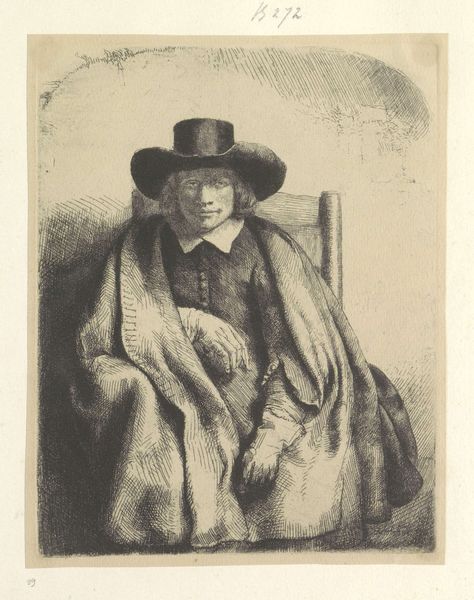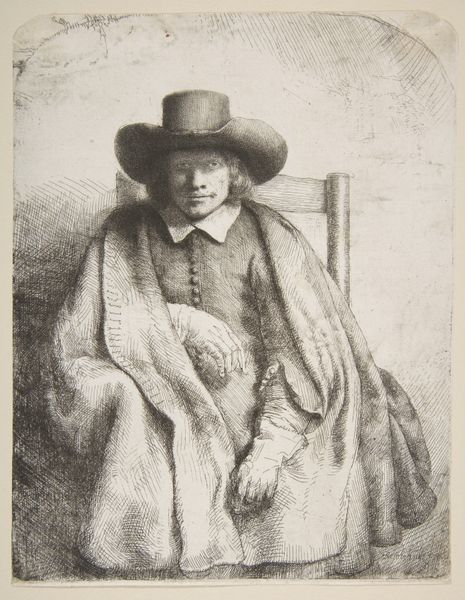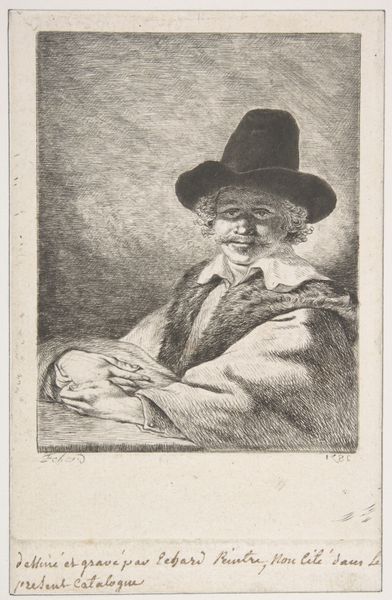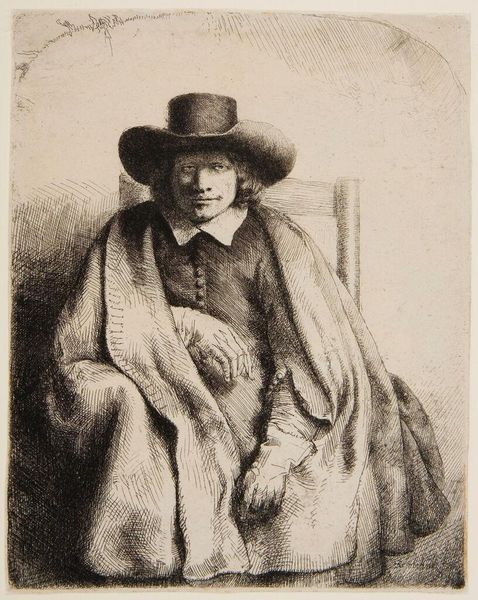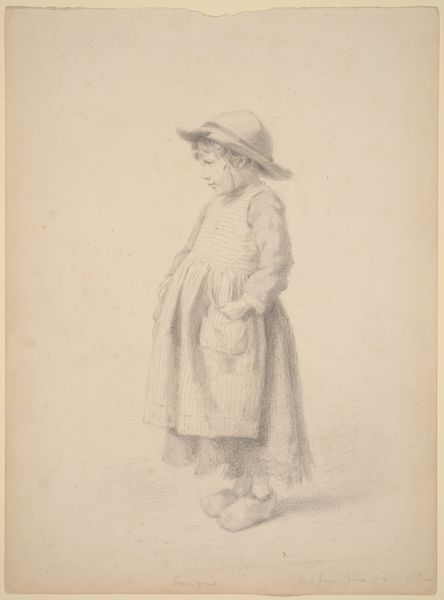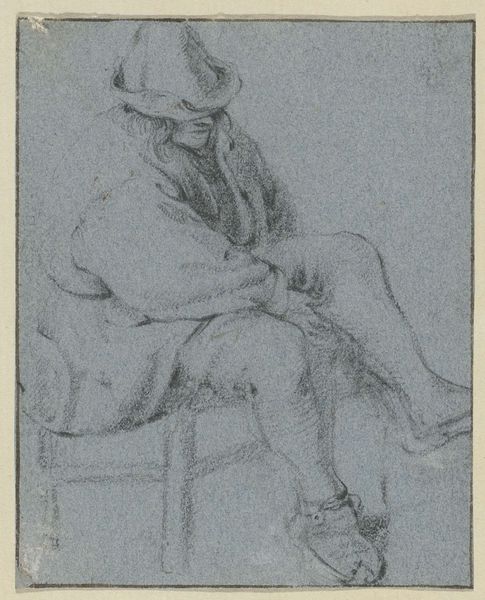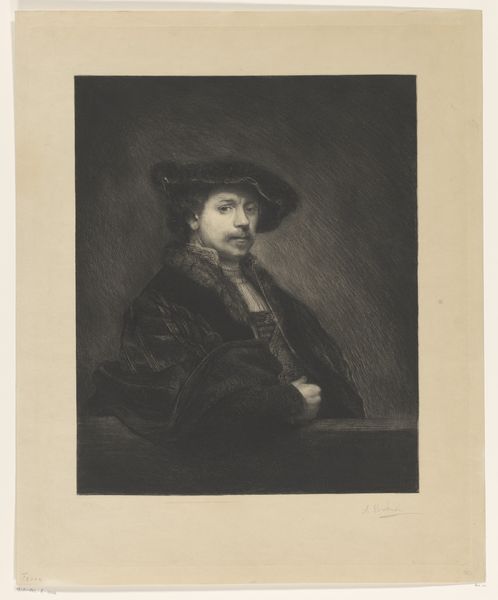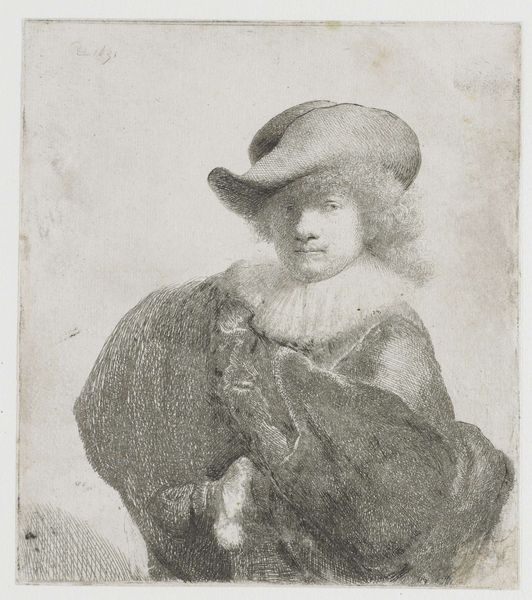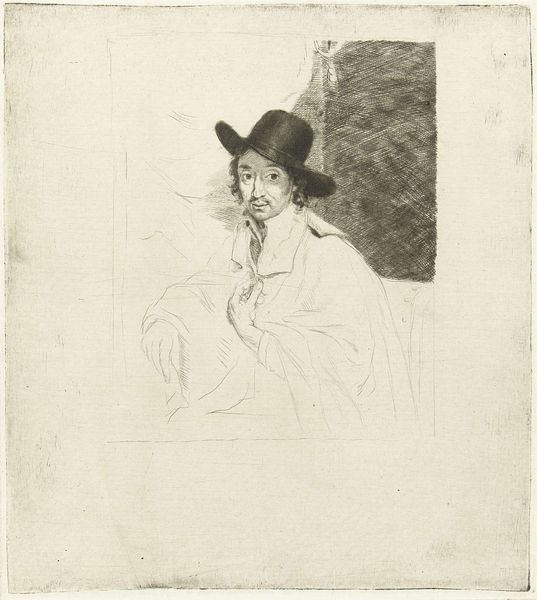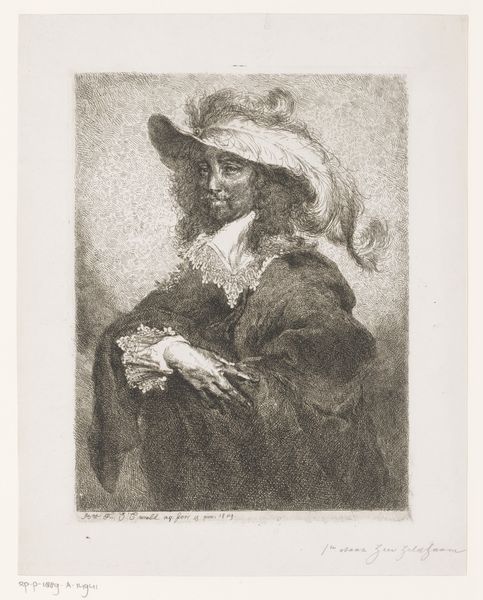
print, etching
#
portrait
#
baroque
#
dutch-golden-age
# print
#
etching
#
figuration
#
portrait drawing
Dimensions: 8 1/8 x 6 5/16 in. (20.6 x 16.1 cm) (plate)
Copyright: Public Domain
Rembrandt van Rijn created this etching of Clement de Jonghe, an art dealer, in the 17th century, a period marked by the rise of the Dutch Republic and its burgeoning merchant class. Here, Rembrandt captures de Jonghe in a moment of quiet repose, seated and draped in a cloak, his expression suggesting a thoughtful demeanor. Rembrandt himself was no stranger to financial difficulty, and his choice to portray de Jonghe, a man who facilitated the circulation of art as a commodity, speaks volumes about the relationship between artistic creation and commerce during this era. De Jonghe's attire and posture reflect the understated elegance and somber tones favored by the Dutch bourgeoisie, a class that was beginning to define itself through its values of hard work, sobriety, and civic responsibility. As you look at this portrait, consider the complex interplay between artist, dealer, and patron, and how this network shaped not only the production of art but also its interpretation and value.
Comments
minneapolisinstituteofart almost 2 years ago
⋮
By 1635, art collectors were seriously interested in the trial proofs that revealed Rembrandt's working process, so he began to produce editions of prints taken from the plates in unfinished stages. Here are two stages of one such print, a portrait of Amsterdam printseller and publisher Clement de Jonghe. Rembrandt began with a direct, informal notation of the sitter and then pushed the portrait in a more formal and sculptural direction. A few years after creating this portrait, Rembrandt became bankrupt, causing his stock of etched copper plates to come into De Jonghe's possession.
Join the conversation
Join millions of artists and users on Artera today and experience the ultimate creative platform.

